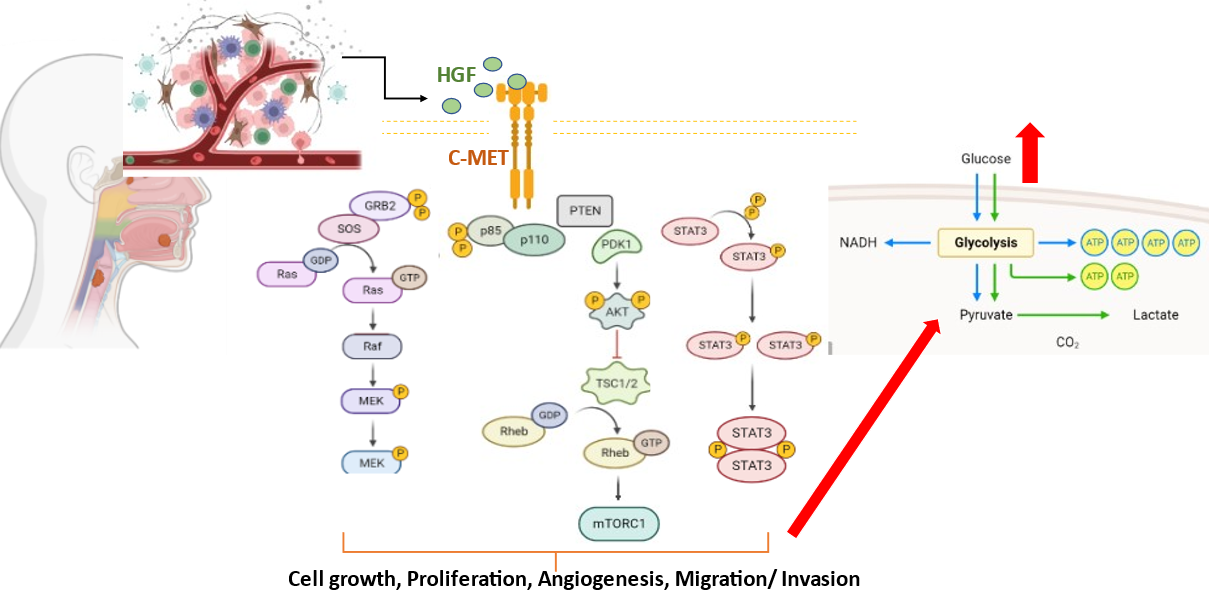Deciphering the role of c-MET in Metabolic reprogramming of Head and Neck squamous cell Carcinoma via In Silico analysis

Keywords:
Head and Neck cancer, Glycolysis, In-silico, Warburg effect, c-MET, Molecular mechanism, Cellular pathway, Cancer mechanismAbstract
Targeting of epidermal growth factor receptors (EGFRs) and vascular endothelial growth factor receptors (VEGFRs) has become a major strategy for the control of head and neck cancer. c-MET, a receptor tyrosine kinase is known to be expressed in many cancers including the head and neck squamous cell carcinoma (HNSCC). The c-MET activity has been correlated with many signaling pathways that help the cancer cells to proliferate, migrate and invade into the normal, healthy tissues. The association of c-MET with glycolytic pathway in HNSCC has not been elucidated yet. Since, increased glycolysis has emerged as a major hallmark for cancer cell proliferation, targeting c-MET could bring an impact to inhibit HNSCC progression. In the present study we use various In-silico tools available to identify the association of c-MET with the major metabolic genes such as HK-II (Hexokinase-II), GLUT-1 (Glucose transporter-I), LDH-A (Lactate dehydrogenase-A), PFK-II (Phosphofructokinase-II) and MCT-1 (Monocarboxylate transferase-1) in HNSCC patient datasets available from The Cancer Genome Atlas (TCGA). Protein networking analysis was used to determine the correlation of c-MET with the metabolic genes. Retrieved sequenced data pathway analysis gives the network of genes associated in the activation of glycolytic pathway. Gene ontology and Enrichr studies provide an insight into c-MET activity in metabolism through molecular, functional and pathway basis in HNSCC. Furthermore, we also have shown a negative correlation of c-MET with immune cell infiltration, suggesting c-MET might have a role in immune suppression in HNSCC patients. Further validation on this study could possibly make c-MET as a potential target to inhibit HNSCC.
URN:NBN:sciencein.cbl.2023.v10.532



